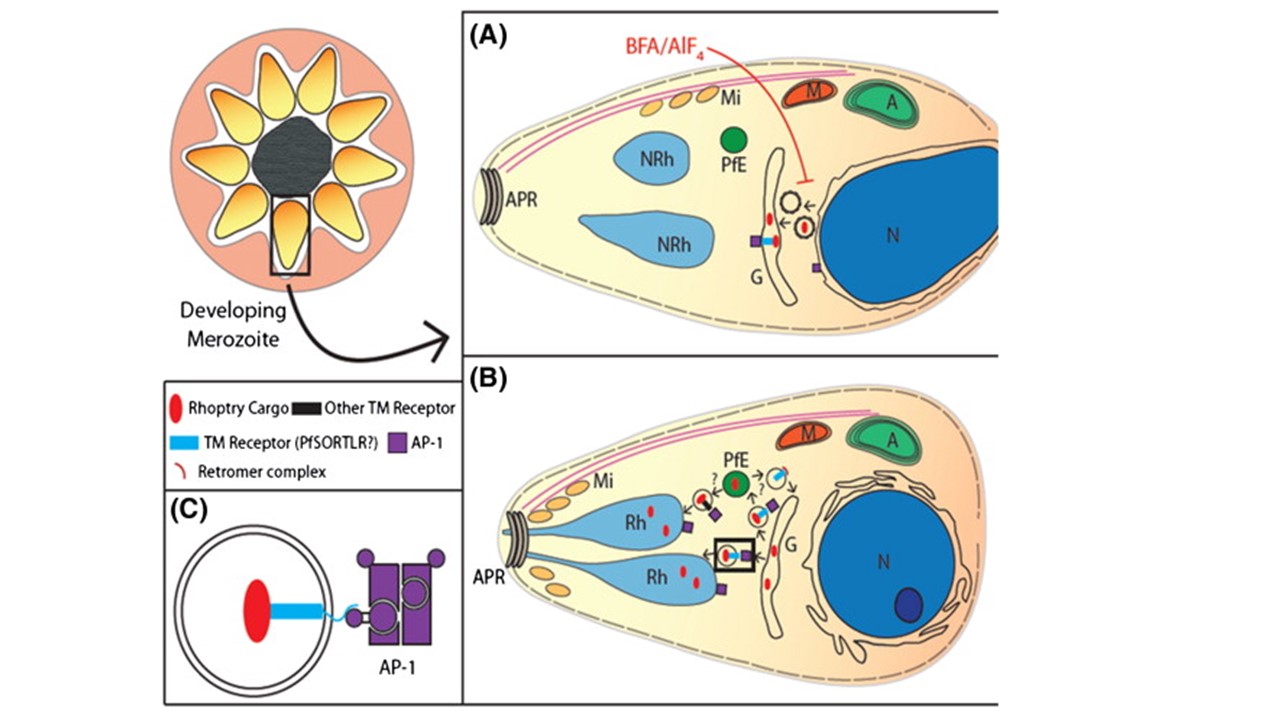(A) Early in merozoite development, coated vesicles transport rhoptry proteins between the ER and Golgi, a process that can be inhibited by addition of BFA/AlF4. Adaptor proteins are synthesized at the ER face and proceed to recognize cargo at the Golgi through transmembrane cargo adaptors. (B) As development progresses, vesicular traffic, which may be clathrin-mediated (not shown), progresses from the Golgi to rhoptries. The cargo may change receptors and recycling can occur via the retromer complex. (C) Enlargement of the vesicle boxed off in panel (B), showing the binding of AP-1 to soluble rhoptry cargoes through a transmembrane receptor, as described in the text. A = apicoplast, APR = apical polar rings, G = Golgi apparatus, M = mitochondrion, Mi = microneme, N = nucleus, NRH = nascent rhoptry, PfE = Plasmodium falciparum endosome, and Rh = rhoptry. Kaderi Kibria KM, Rawat K, Klinger CM, Datta G, Panchal M, Singh S, Iyer GR, Kaur I, Sharma V, Dacks JB, Mohmmed A, Malhotra P. A role for adaptor protein complex 1 in protein targeting to rhoptry organelles in Plasmodium falciparum. Biochim Biophys Acta. 2015 1853(3):699-710. PMID: 25573429
